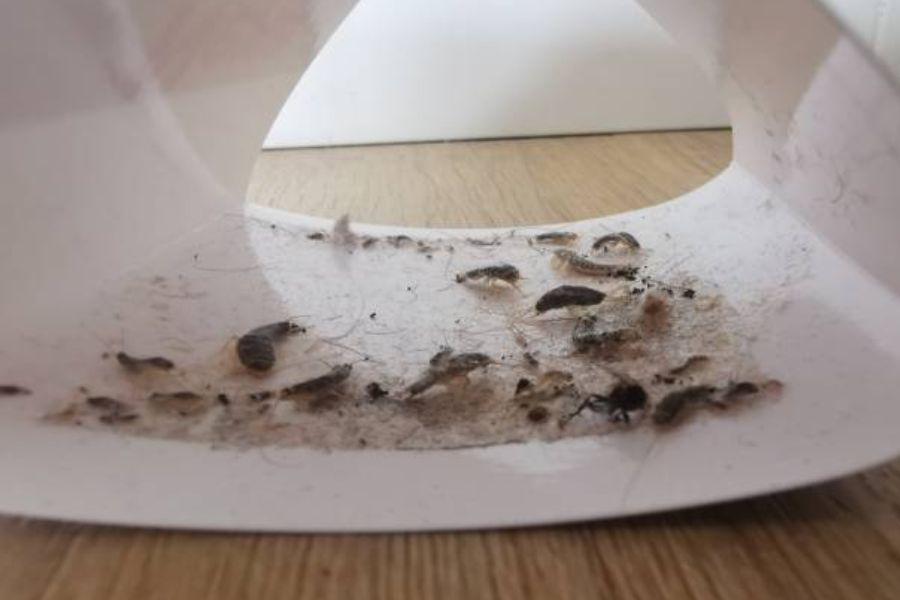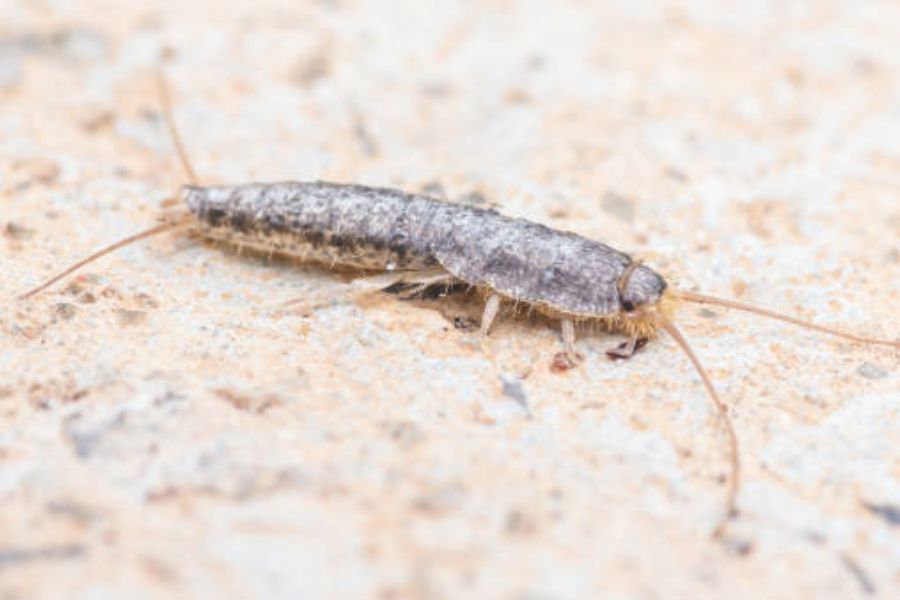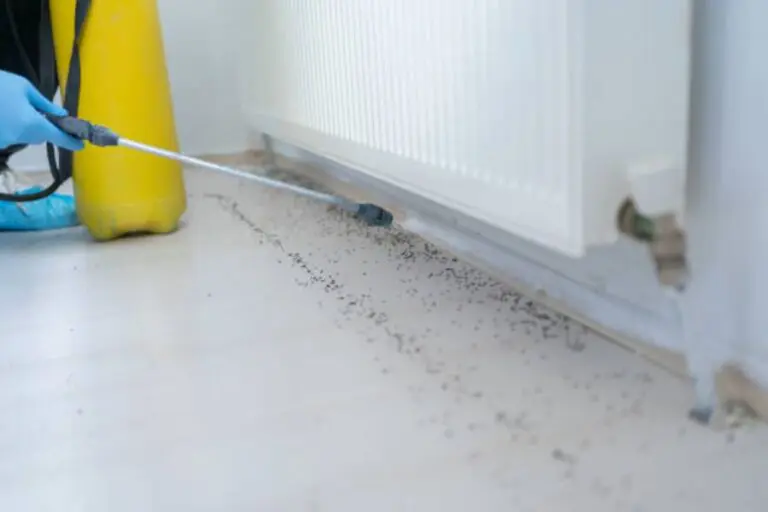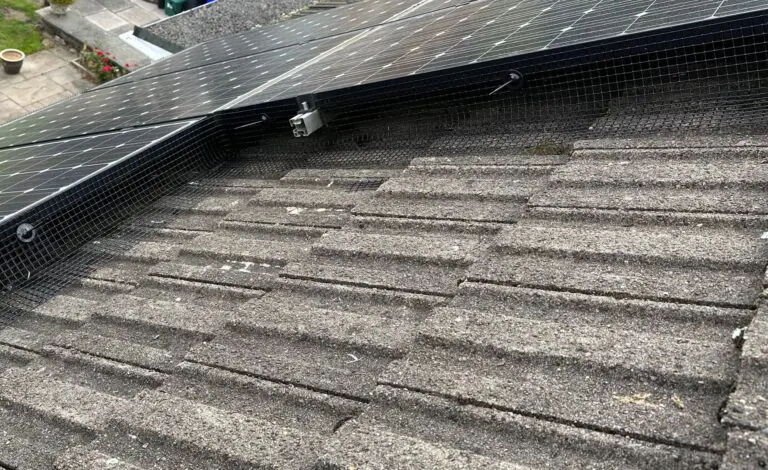Silverfish: Understanding How to Protecting Your Home

Silverfish, with their distinct silver bodies and fast, slippery movements, may seem harmless in the home. However, they are more than just an annoyance. These elusive insects can damage personal belongings, contaminate food sources, and even indicate underlying moisture issues in a household. This comprehensive guide delves into everything you need to know about silverfish—from their habits and natural control methods to long-term prevention and professional pest control measures.
What is a Silverfish?
Silverfish, scientifically named Lepisma saccharina, are small, wingless insects with a unique fish-like shape. They are commonly recognised by their metallic, silvery appearance due to the shiny scales covering their bodies. Silverfish are roughly half an inch to an inch long, with three bristle-like appendages at their rear end. Silverfish are nocturnal, preferring to remain hidden during daylight hours and emerging at night to feed. These insects thrive in dark, damp environments, including basements, attics, bathrooms, and kitchens. They have an affinity for foods high in carbohydrates, such as starches, sugars, and proteins, making them particularly destructive to paper, books, fabrics, and various stored items.
How Do I Get Rid of Silverfish?
Removing silverfish from your home often requires a multi-step approach that includes immediate and preventive measures. Here’s a breakdown of the most effective methods for eliminating silverfish:
Inspection: Conduct a thorough inspection to identify areas where silverfish are most active. Look for their droppings, discarded scales, and damage to items. Dark, damp spaces like basements and bathrooms are ideal places to check.
Professional Treatments: When it comes to large or persistent silverfish infestations, professional pest control services are equipped with targeted treatments that can be highly effective. These treatments, such as chemical sprays, dusting treatments, and insecticidal gels, disrupt the silverfish lifecycle and can be particularly adequate for large infestations, providing reassurance and confidence in seeking professional help.
Insecticidal Baits: Place bait traps in areas where silverfish are active. These baits are specially formulated to attract silverfish, allowing them to carry poison back to their hiding spots, effectively reducing the population over time.
Moisture Control: Since silverfish are drawn to damp environments, addressing moisture issues is critical. Fix leaky pipes, use dehumidifiers, and ensure that rooms are well-ventilated to create an inhospitable environment for silverfish.
Silverfish, with their notorious resilience, may take time and persistence to completely eradicate from your home. However, by combining the most effective methods, you can significantly increase the likelihood of successful eradication. This persistence is key in the battle against these pests.
Are There Any Natural Remedies to Control Silverfish?
For those interested in non-toxic approaches, several natural remedies may help repel silverfish. Here are a few options:
Diatomaceous Earth: This natural powder dehydrates silverfish upon contact. Sprinkle it around problem areas, baseboards, and cracks and crevices. It is a safe option for homes with pets and children.
Essential Oils: Oils like peppermint, cedar, and lavender are known to repel silverfish. Soak cotton balls in these oils, place them in areas with high silverfish activity, dilute them with water, and spray along baseboards and dark corners.
Cinnamon: Silverfish dislike the smell of cinnamon. Sprinkle cinnamon powder or place cinnamon sticks in areas where silverfish are commonly found.
Citrus Peels: Silverfish are repelled by the scent of citrus. Place peels from oranges, lemons, or grapefruits in infested areas to keep silverfish at bay.
While these natural remedies may help manage a minor infestation, they are generally less adequate for severe infestations. It’s often best to seek help from pest control professionals for ongoing issues.

How Do Pest Control Services Get Rid of Silverfish?
Professional pest control services employ specialised methods that are often more effective for large or persistent silverfish infestations. Here’s how they approach the problem:
Inspection: Technicians start by inspecting the home to assess the infestation and identify areas where silverfish are hiding.
Targeted Chemical Treatments: Chemical sprays, dusting treatments, and baits designed for silverfish are applied in high-activity areas to kill adult silverfish and their eggs.
Crack and Crevice Treatments: Pest control professionals often apply insecticidal dust in cracks and crevices where silverfish hide, ensuring long-term control as the dust remains effective for extended periods.
Moisture Control and Recommendations: To create a less favourable environment for silverfish, professionals may suggest dehumidifiers or addressing water leaks.
Follow-Up Visits: Many pest control services offer follow-up visits to ensure that the silverfish population has been effectively reduced and to address any remaining issues.
Is it Essential to Treat Damp Areas to Get Rid of Silverfish?
Yes, it is absolutely essential to address dampness when it comes to controlling silverfish. These pests thrive in humid, damp areas, and reducing moisture levels is a crucial step in making your home less inviting to them. By treating areas with high moisture levels, such as bathrooms, basements, and kitchens, you can significantly reduce the risk of a silverfish infestation, underlining the urgency and necessity of this control measure.
How Can I Prevent Silverfish Infestations?
Preventing silverfish infestations involves several proactive steps:
Control Moisture: Reducing humidity levels is one of the most effective ways to prevent silverfish. Use dehumidifiers, fix any leaks, and ensure that rooms are well-ventilated.
Seal Entry Points: Inspect your home for cracks, crevices, or gaps, particularly around windows, doors, and plumbing. Sealing these areas can prevent silverfish from entering.
Proper Storage: Store paper, books, fabric, and other items susceptible to silverfish damage in airtight containers to limit their access.
Decluttering: Silverfish are drawn to dark, undisturbed areas. Regularly clean and declutter storage spaces to reduce hiding spots.
Regular Vacuuming: Vacuum carpets, baseboards, and other areas where silverfish may hide regularly. This helps remove any food sources, eggs, or larvae.
Use Natural Repellents: To naturally repel silverfish, place cedar chips, lavender sachets, or citrus peels in closets, drawers, and storage areas.
These preventive measures can create a less attractive environment for silverfish and reduce the likelihood of an infestation.

What Counts as a Silverfish Infestation?
The presence of even a few silverfish can indicate the beginnings of an infestation. If you notice silverfish in multiple rooms, frequent sightings at night, or damage to belongings like books, papers, or clothing, it may be time to take action. A single silverfish sighting does not necessarily mean an infestation, but consistent sightings and signs of damage usually indicate a larger problem.
What Attracts Silverfish to Homes?
Silverfish are primarily attracted to damp, humid environments. Homes with bathrooms, basements, and kitchens that retain moisture are especially prone to silverfish invasions. Additionally, silverfish are drawn to food sources, particularly those high in carbohydrates and protein, such as paper, cardboard, glue, and even flour. Cracks and minor entry points in walls or around windows make it easy for silverfish to enter and settle in your home.
Are Silverfish Common Pests?
Yes, silverfish are common pests found in residential and commercial properties worldwide. They are particularly prevalent in homes with basements, bathrooms, or storage areas that provide the perfect combination of humidity, warmth, and darkness. Silverfish can be a persistent problem, as they can survive on minimal food and are highly adaptable to indoor environments.
Can Silverfish Damage My Belongings?
Silverfish can indeed cause significant damage to various household items. They are particularly attracted to materials containing starches, sugars, and proteins, including paper, books, cardboard, wallpaper, clothing, and certain types of food. Their feeding habits often result in holes, notches, and yellowish stains on affected materials, making them a frustrating pest for homeowners.
Can Silverfish Infest My Kitchen?
Yes, silverfish can infest kitchens. They are attracted to food sources, moisture, and warmth. They commonly hide in cabinets, pantry shelves, and areas under sinks, where they can access food and moisture. Proper food storage in sealed containers and regular cleaning can help keep silverfish out of your kitchen.
Are Silverfish Signs of a Dirty House?
Silverfish are not necessarily a sign of poor cleanliness. These pests are attracted to humidity and accessible food sources, not dirt or grime. Even well-maintained homes can experience silverfish infestations, mainly if underlying moisture issues exist. Regular cleaning can help limit their food sources, but the primary focus should be moisture control.
Where Do Silverfish Come From?
Silverfish may enter homes from various sources:
External Entry: They can find their way inside through cracks and gaps in exterior walls, windows, doors, and vents.
Infested Items: Silverfish can hitchhike on items brought into the home, such as books, papers, or cardboard boxes.
Plumbing and Utility Lines: Silverfish can travel along plumbing and utility lines, especially in multi-unit buildings.
Natural Migration: Silverfish may migrate indoors, seeking shelter from extreme weather or seasonal changes.
Are Silverfish Harmful to Humans?
Silverfish are generally harmless to humans. They do not bite or sting and are not known to carry diseases. However, their scales and faecal matter can trigger allergies in some people. While silverfish are primarily a nuisance, they can cause frustration due to the damage they inflict on personal belongings.
Silverfish infestations can be persistent and challenging to control. By understanding their habits, addressing moisture issues, and implementing preventive measures, you can significantly reduce the risk of an infestation. Whether you prefer natural remedies, professional pest control, or both, tackling silverfish early and creating a less hospitable environment will help keep your home safe and silverfish-free.





